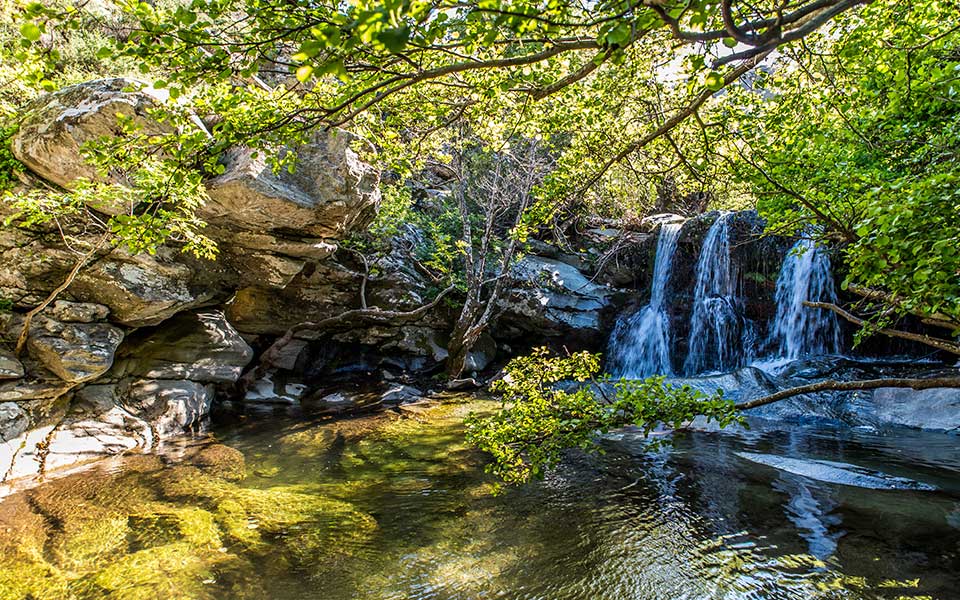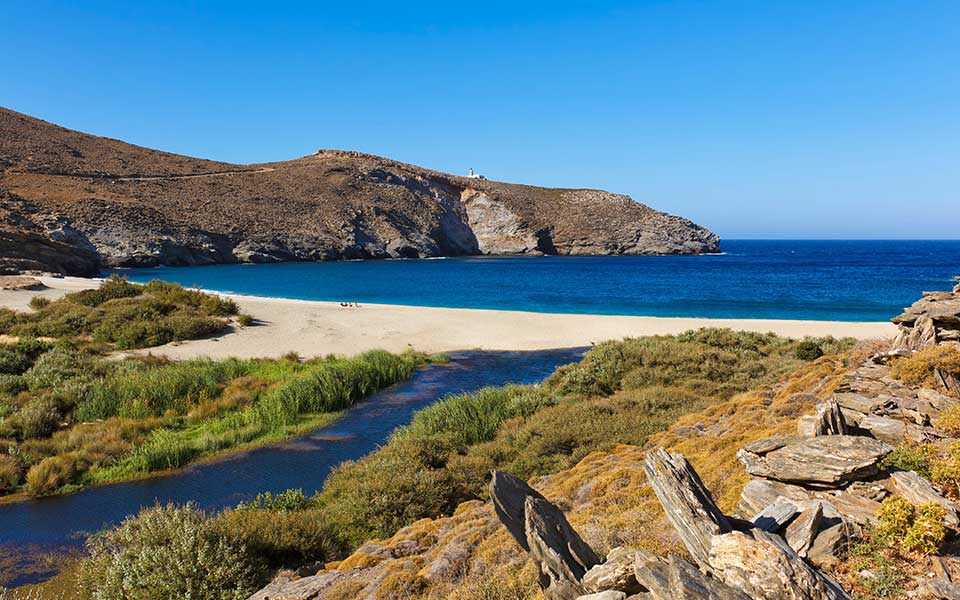Andros, the northernmost and greenest island of the Cyclades, differs significantly from the other islands in the Aegean archipelago. With a rich maritime and artistic history that has greatly influenced its tourism development, Andros has managed to avoid intense and rapid commercialization, preserving many of its traditional characteristics. This image is particularly pronounced in Hora, which is built on a peninsula on the western side of the island. Cars are not allowed in the settlement, and houses are built around the central pedestrian walkway that crosses Hora vertically.
The grand mansions of ship owners, as well as other buildings influenced by nearly all architectural trends of the first half of the 20th century, bear witness to the economic prosperity that maritime trade brought to many families on the island. The home of ship owners, captains, and engineers, Hora has been marked by the wealth brought by the sea. This way of life, the maritime heritage of Andros from the Interwar period to the 1950s, is captured in the novel “Little England” by Ioanna Karystiani and its namesake film directed by Pantelis Voulgaris. Throughout the 20th century, shipping families contributed to the island in various ways, from funding infrastructure to donations for events and cultural projects.

© Shutterstock
The inauguration of the Goulandris Museum of Contemporary Art in Hora in 1979, the operation of the Archaeological Museum since 1981, the addition of the Kaireios Library in 1987 and the Kydonieos Foundation in 1994 breathed new life into the island’s artistic and cultural scene. Throughout the summer, exhibitions, theatrical performances, and concerts take place in various venues, attracting a multitude of visitors who come to Andros to experience its artistic identity.
Another element greatly appreciated by visitors is the island’s natural beauty. In contrast to other Cycladic islands, Andros boasts dense vegetation, streams, rivers, and waterfalls. The most greenery is found in the center of the island, between Gavrio and Hora. You never feel the heat in the village of Menites, with its small waterfalls, stone bridge, and fountains adorned with lion heads, while the 20-minute walk to the waterfalls of Pythara in the village of Apikia is captivating, as you stroll through dense clusters of trees beside the little river. A bit more walking is required to reach the enchanting scene of the arched bridge of Achla, elevated high above the beach of the same name.

© Shutterstock
In Andros you will come across oak trees, plane trees, walnut trees, and many cypresses. Plane trees and numerous lemon trees await you in the village of Stenies, one of the so-called aristocratic villages, as well as the villages of Menites, Lamira, and Apikia, chosen centuries ago by the Franks and the Venetians as locations to build their towers. In the center of Stenies, refresh yourself at the four stone fountains with gurgling water, visit the Empeirikos Fabrica, an old abandoned pasta factory that also operated as a watermill, and enjoy the views over the Bay of Gialia and the sea.
The island is filled with marked hiking trails thanks to the initiative “Andros Routes.” Since 2010, a group of volunteers who love Andros have aimed to revive the old footpaths and cobbled trails that connected the villages and various points of the island. The result, thirteen years later, is a dense network of trails spanning approximately 200 kilometers. The volunteers not only explored the old routes; they cleared and marked them, but they also ensured their maintenance every year. The trail network is certified by European and global organizations, and in recent years has become a significant attraction for both Greek and foreign hikers. The footpaths cover nearly the entire island, either connecting settlements or leading to beaches, landmarks, and points of interest.

© Shutterstock
One of the most beautiful routes is the one that starts from the village of Strapouries and heads towards the forest and stream of Evrousies. In the west, walk from the port of Gavrio towards the settlement of Ano Aghios Petros and the large sandy beach of Kato Aghios Petros – it’s an easy 5-km route that you can traverse at a leisurely pace in about 2 hours. In the north of the island, above Zorkos Beach, begins a well-marked trail that will lead you to Trypes Cave with lovely views over the sea.
The island boasts nearly 30 beaches, most of them with golden sand and quite spacious. In the northwest, Pyrgos, Vlychada, and Kalamitsi are ideal for those who love unserviced settings, while further south, after Gavrio, Aghios Petros Beach and its neighboring Hryssi Ammos offer beach bars and amenities. In the southwest, Halkolimnionas and Apothikes beaches feature turquoise waters and beach bars. The former has shallow waters, ideal for families, while the latter has deeper waters with an interesting seabed, perfect for those who enjoy snorkeling. Don’t forget Zorkos Beach and Vitali in the north, Ahla and Gialia to the east, and of course the famous Grias To Pidima Beach, with its iconic rock in the southeastern part of the island.












